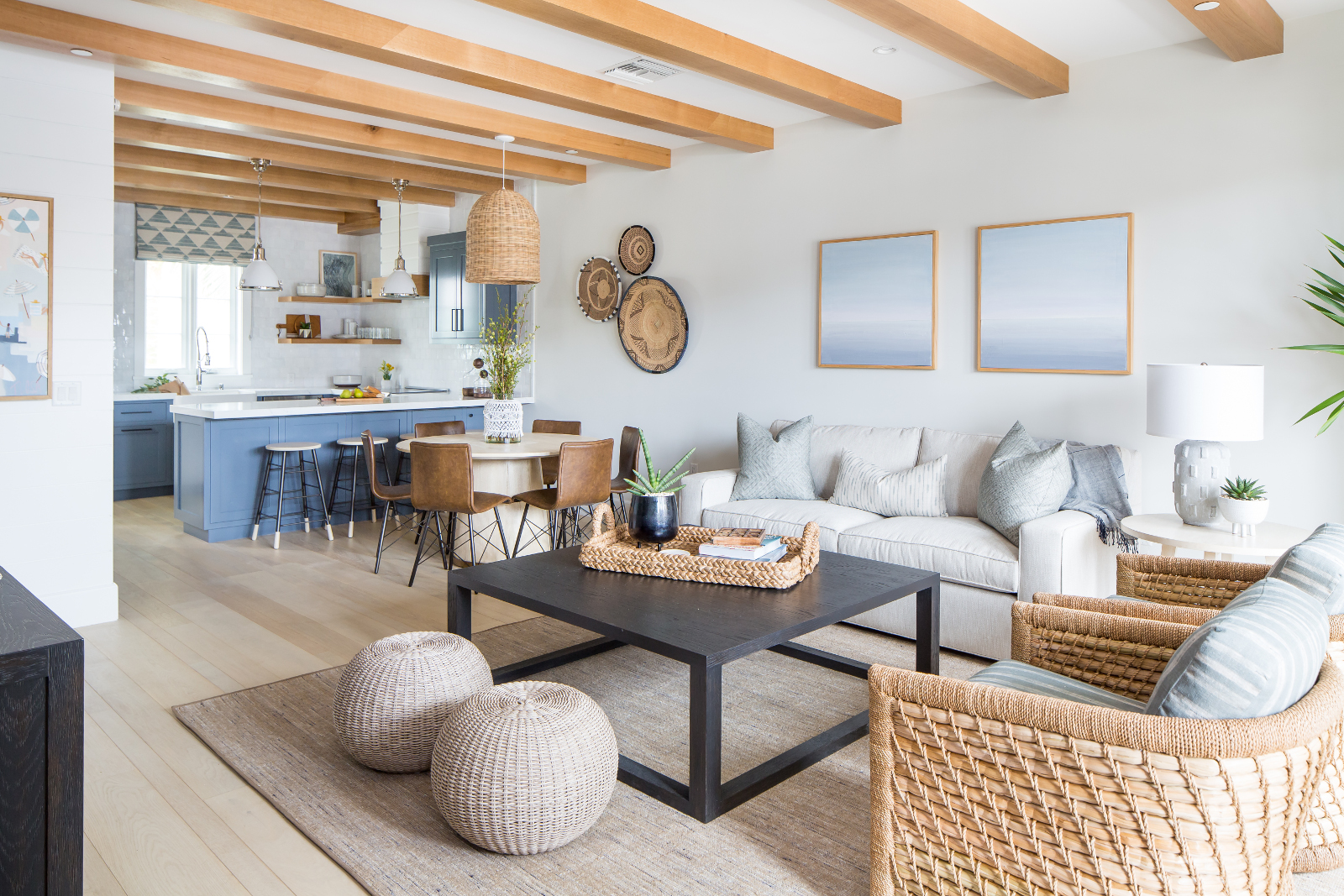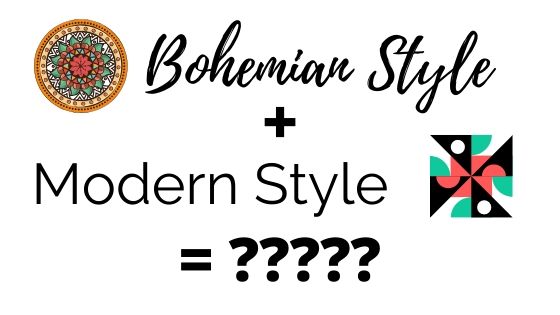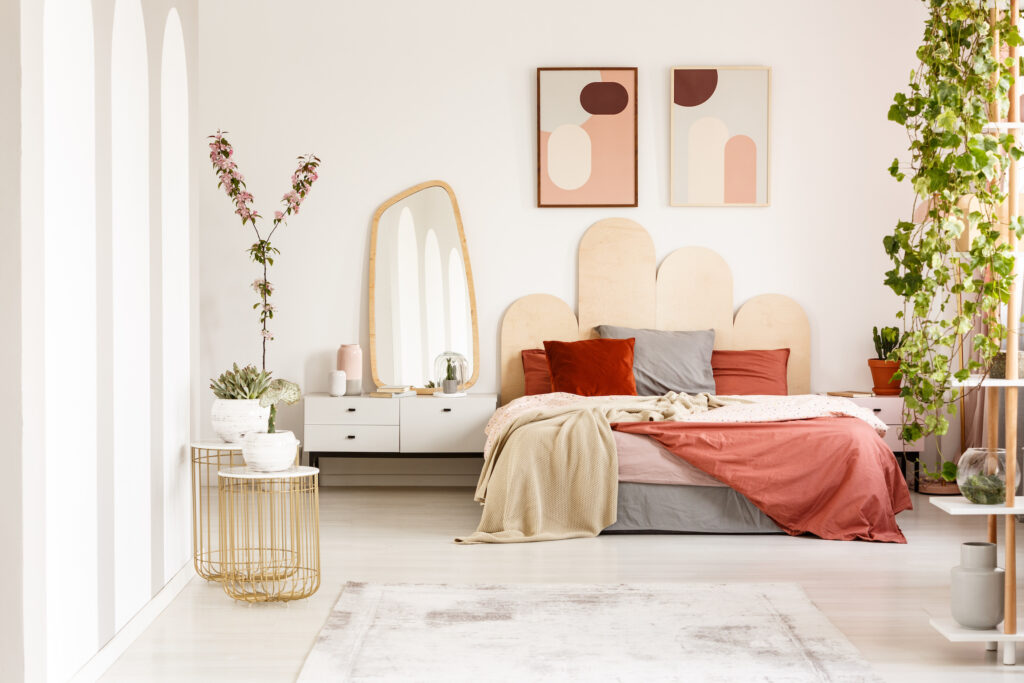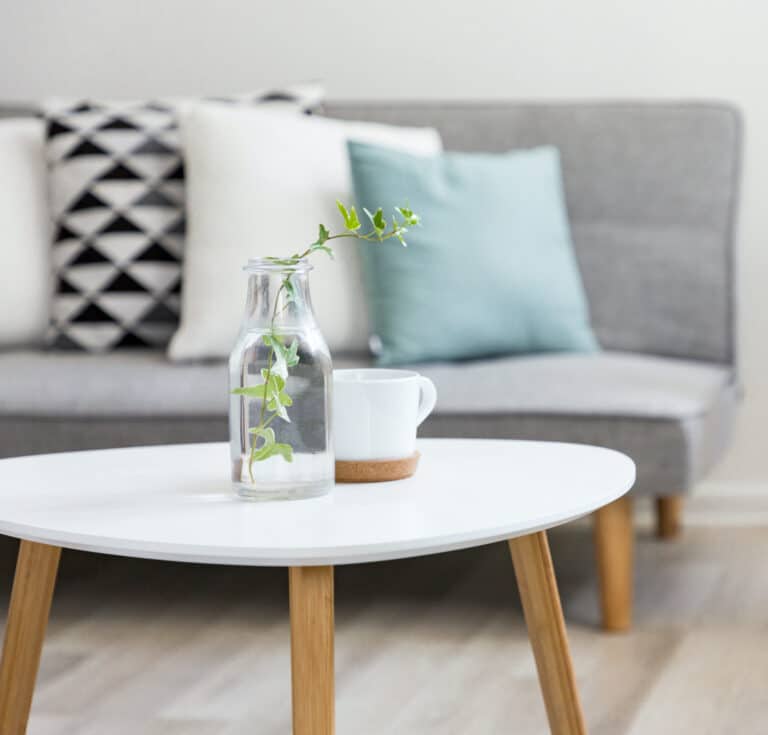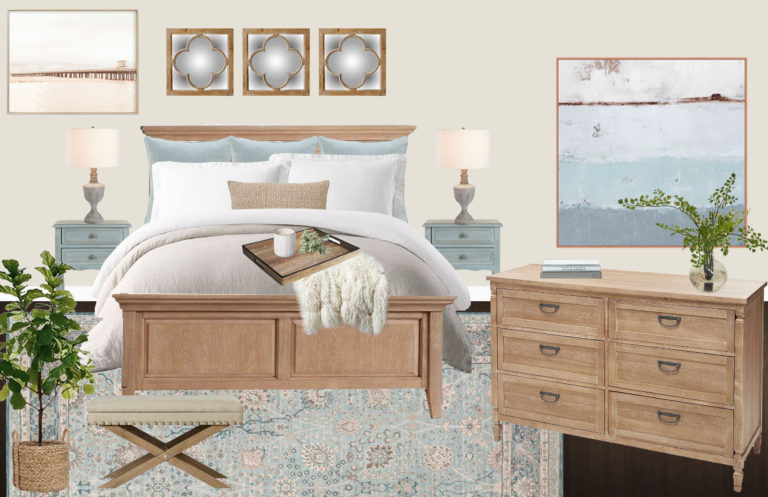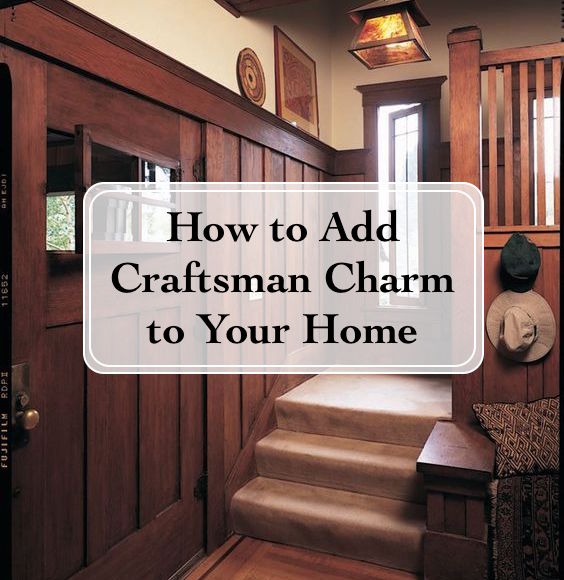As a designer, I often work with couples who have completely different design styles. Coming up with a design that “marries” two styles is a skill that all designers must master, and it can sometimes be a challenge. Especially in cases where it seems like the two styles are complete opposites! The trick is to blend the two styles, such that the home reflects the personalities and preferences of both sides. Do you and your significant other find yourself on opposite sides of the style spectrum? Or, do you love two different styles, and can’t seem to decide which one you like best? If so, then keep reading, because I have some great tips for you on blending design styles.
Tip #1 – Find the Common Thread
The key to blending two design styles is to find the common thread between them, and there is almost always a commonality to be found. Let’s walk through an example. I am a big fan of two different styles – Modern and Coastal. At first, you might think these two styles are very different, and there definitely are some differences, but they also have several things in common.
Let’s take a look at some of the defining elements of Modern style.
- Clean, straight lines, uncluttered, and a minimalist, form-follows-function attitude
- Main color palette includes white, beiges, grays, and black. Earthy colors used as accents.
- Open, airy living spaces with abundant natural light.
- Unadorned windows (minimal or no window treatments)
- Furniture constructed of unique materials other than wood (like plastic and steel)
Next, let’s look closer at key features of Coastal style. Oh, and let me first clear up that Coastal is not the same thing as Nautical (anchors, navy blue, and seashells).
- Casual, comfortable, and somewhat minimalist, with lots of natural elements, like jute and weathered wood
- Color palette includes mostly whites, and other colors inspired by nature (especially the blues, grays, beiges, and greens of the ocean).
- Incorporates a variety of natural textures, woods, and simple fabrics (like linen), but doesn’t use many metallics.
- Bright, light, open, and airy interiors, with lots of natural light.
- Window treatments are minimal, often favoring bamboo shades and white curtain panels
- Furniture often crafted of wicker, rattan, and weathered woods.
What things do you see in common between these two styles? Well, they both favor bright, open spaces, with white being a dominant “color,” and earth tones being secondary. And, they both prefer a minimalist approach. So, if I were to design a room that blended both Modern and Coastal styles, I would start by creating the feeling of an open, light space. I’d also choose a color palette with lots of white, and sprinkle in some other earth tones (like blue, green, or terracotta) as accents. Those are my common threads, so they are the key features I need to incorporate into the room to successfully blend the two styles together.
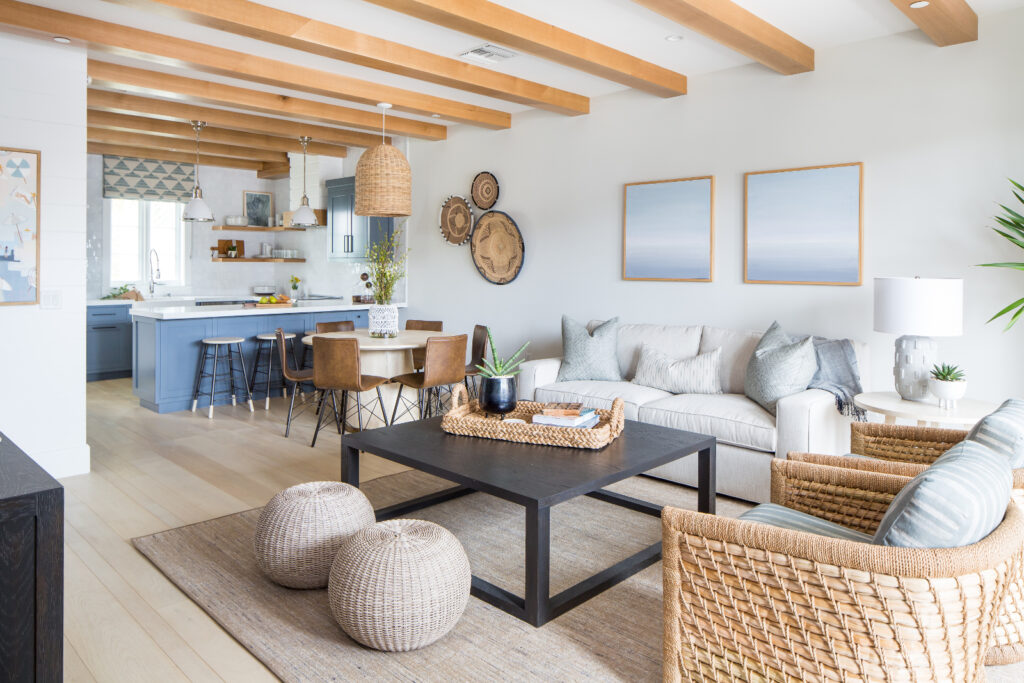
Tip #2 – Create Commonality With Color
Sometimes two styles are just so different, that you might really struggle to come up with a common thread. The best styles to blend are always going to be those that have several features in common. But, if you find yourself in the situation where you’re trying to blend two opposite styles, your best bet is to create commonality with a single color or wood tone. Color is one of the best ways to tie a design together, and is a safe approach when you’re struggling to find common ground between two styles.
If you have a colorful piece of furniture with strong ties to a style, you can add decorative accessories in that same color (in another style) throughout the room to help unify the space. Using items from different styles in the same color family is a great way to create a blended, cohesive design. Be sure to consider the 60-30-10 rule when using color in your space for best results.
You can also achieve similar results with wood tones. Using furniture, picture frames, wood accents, and accessories in the same wood tone can help create a unifying bridge between two styles, just like color.
Tip #3 – Limit Your Color Palette
When blending styles, another tip is to stick to a tight color palette. This means that you’ll want to limit the number of colors in your room to a small subset (like 2-3 colors), and stick to it. Why? If you use too many different colors in your room, while also incorporating elements from two different styles, the design can start to feel a little confusing and disjointed. So, one trick designers use when blending styles is to use a limited color palette.
Just because you’re limiting the color palette, doesn’t mean it has to be boring! You can use different textures, shapes, and patterns throughout the space to add visual interest.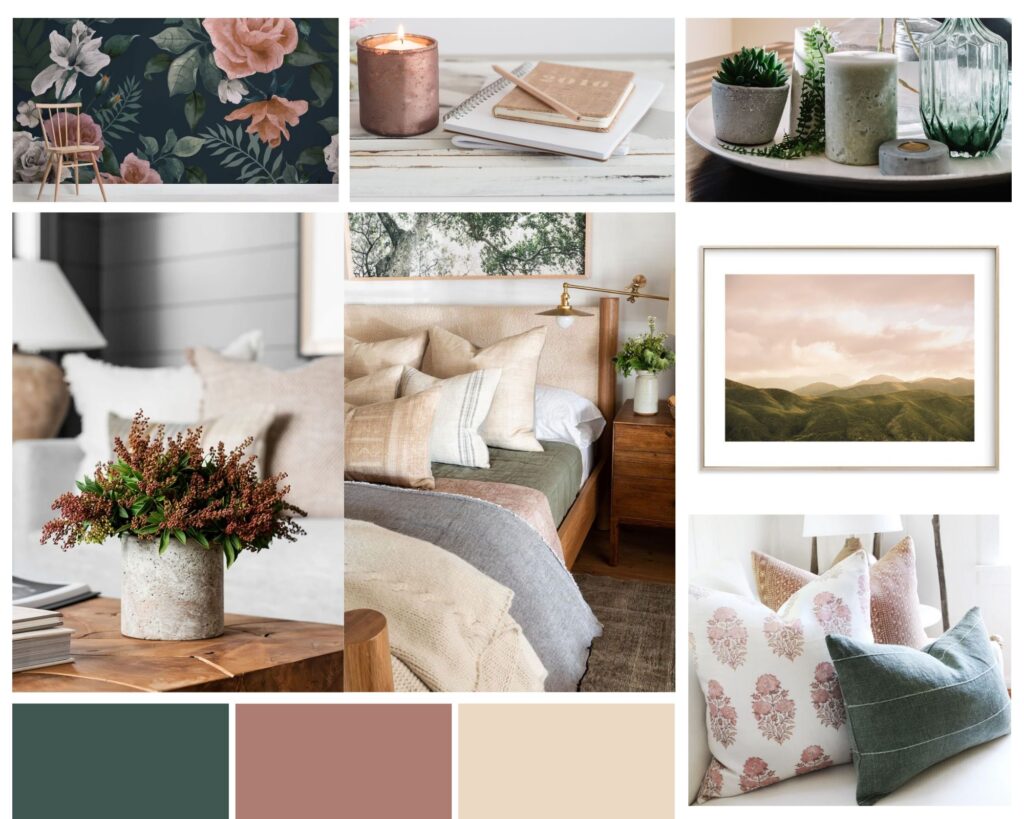
Tip #4 – The 80/20 Rule
How much of each style should you use in your room? You might immediately think you should aim for half and half, but that isn’t always the best choice. When styles share a lot of common features, you can get away with incorporating the two design styles fairly evenly. However, if the styles don’t have a lot of common elements, it’s best to follow the 80/20 Rule. This rule is a great way to ensure that your two styles work together, rather than both styles competing for attention and fighting with each other.
The 80/20 rule states that 80% of the room will be devoted to one style, and 20% of the room to the other style.
Choose one style to be the dominate (80%) style in the room. It will become the primary influence for your furniture choices, rugs, lighting, and color palette. Which one should be the 80% style? Whichever style has more of the features you like best, or identify with the most! The second style will then be a supportive player in the design, and will fill in the remaining 20% of the overall look of the room. Things like decorative accessories, light fixtures, artwork, and accent pieces are great items to use for the remaining 20%. As you create the design of the room, be sure to stick to the 80/20 rule, letting one style take center stage in the overall design.
Blending design styles is an important decorating skill to learn, because chances are you and your significant other won’t have the same style preferences. Or, you might be like me, and find yourself in love with multiple styles. The great news is that you can take two styles, and create a new blended style that will reflect your personality. Just follow the tips in this post, and use them to crate a beautiful home that is uniquely you!

